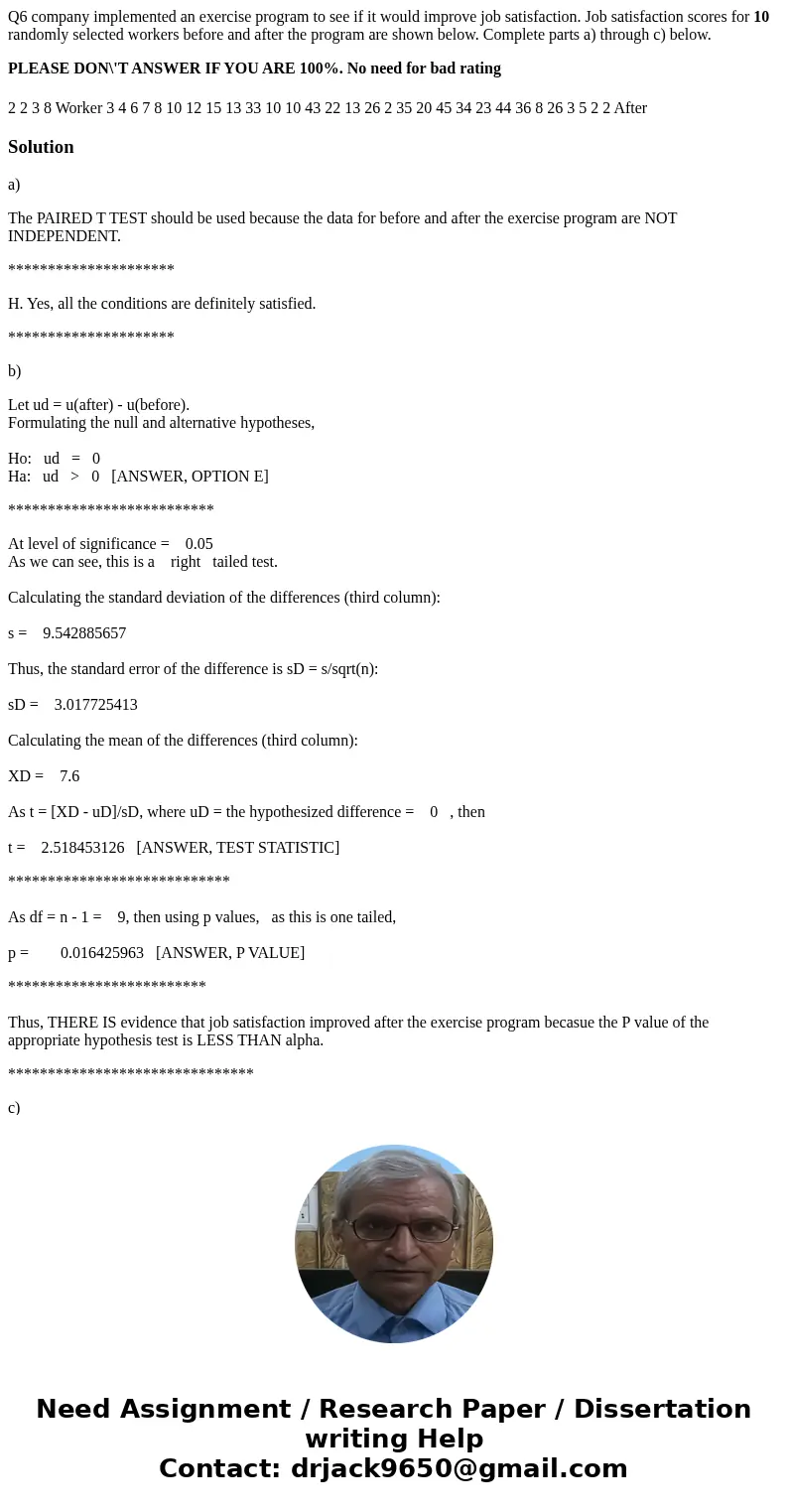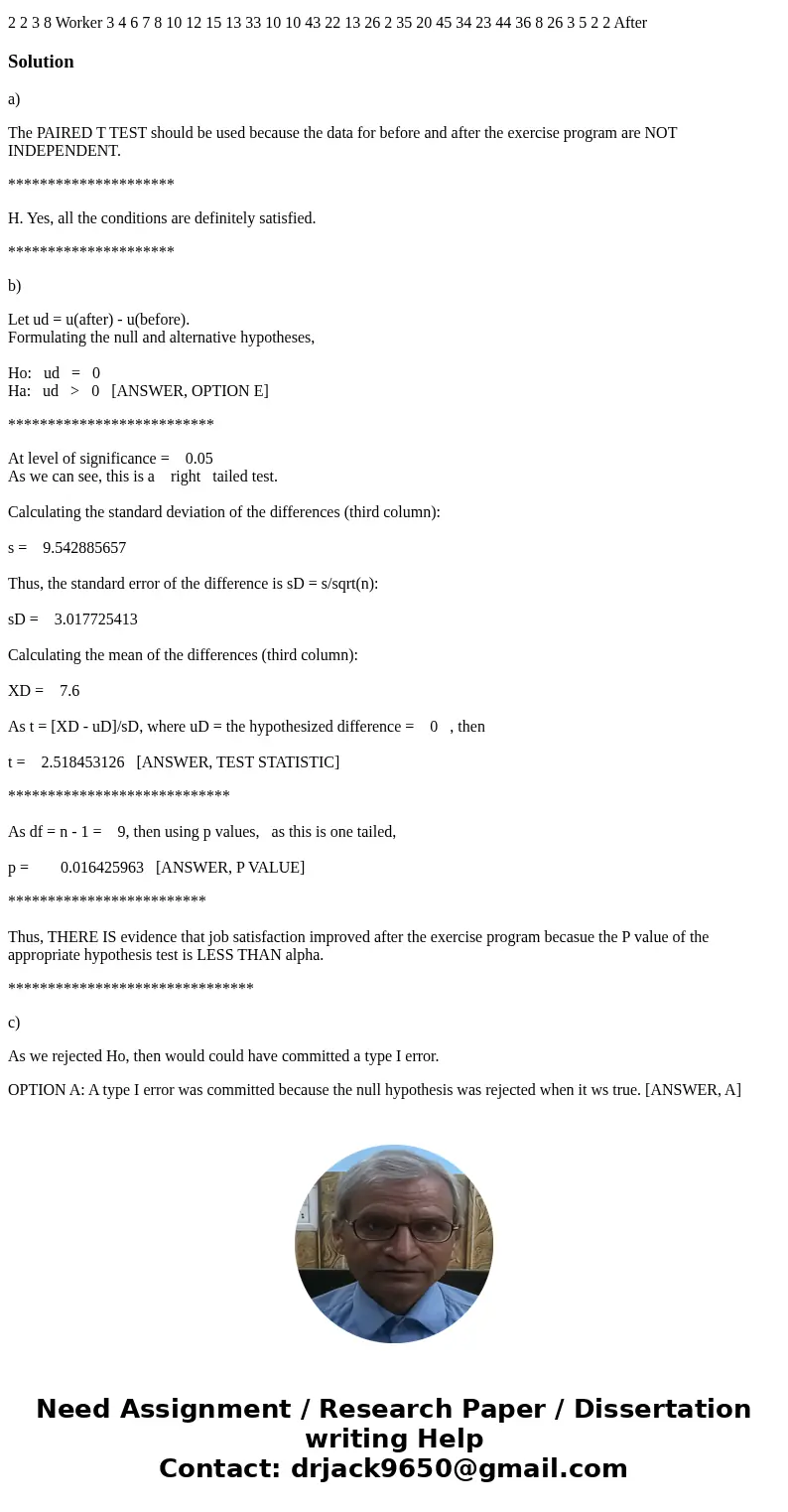Q6 company implemented an exercise program to see if it woul
Q6 company implemented an exercise program to see if it would improve job satisfaction. Job satisfaction scores for 10 randomly selected workers before and after the program are shown below. Complete parts a) through c) below.
PLEASE DON\'T ANSWER IF YOU ARE 100%. No need for bad rating
Solution
a)
The PAIRED T TEST should be used because the data for before and after the exercise program are NOT INDEPENDENT.
*********************
H. Yes, all the conditions are definitely satisfied.
*********************
b)
Let ud = u(after) - u(before).
Formulating the null and alternative hypotheses,
Ho: ud = 0
Ha: ud > 0 [ANSWER, OPTION E]
**************************
At level of significance = 0.05
As we can see, this is a right tailed test.
Calculating the standard deviation of the differences (third column):
s = 9.542885657
Thus, the standard error of the difference is sD = s/sqrt(n):
sD = 3.017725413
Calculating the mean of the differences (third column):
XD = 7.6
As t = [XD - uD]/sD, where uD = the hypothesized difference = 0 , then
t = 2.518453126 [ANSWER, TEST STATISTIC]
****************************
As df = n - 1 = 9, then using p values, as this is one tailed,
p = 0.016425963 [ANSWER, P VALUE]
*************************
Thus, THERE IS evidence that job satisfaction improved after the exercise program becasue the P value of the appropriate hypothesis test is LESS THAN alpha.
*******************************
c)
As we rejected Ho, then would could have committed a type I error.
OPTION A: A type I error was committed because the null hypothesis was rejected when it ws true. [ANSWER, A]


 Homework Sourse
Homework Sourse